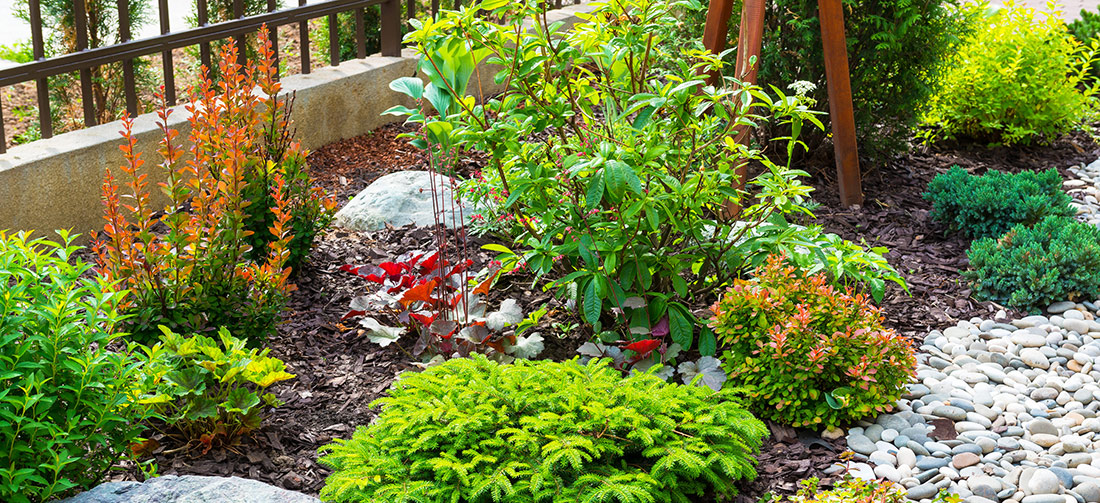
In every neighborhood, there are usually one or two homes that really stand out. Sometimes this is thanks to a well-executed home design…or maybe there’s a stunning, colorful display of plants and shrubs and a lush green lawn area surrounding the home that commands attention. Neighbors may speculate that the resident has a ‘green thumb’ – while they’re just ‘green’ with envy.
Green is a key word when talking about yardscapes. If modifications and improvements are done carefully and well, caring for your yard and landscaped areas should result in two kinds of green: the kind you tend and the kind you spend. Achieving the fundamental goal of creating a functional and water-efficient property should result in saving both water and money.
When you are ready to start selecting plants, shrubs and perhaps trees, go back to your basic overall plan, and keep in mind the differences in soil, sun/shade, and moist/dry areas identified in the site evaluation and analysis. The number one rule is to group ALL plants by their water requirements, so you’ll end up with: 1. High water-use zones – small, highly visible areas, such as the home’s entrance and/or patio areas, that can be watered as needed (no more than 10% of the yardscape), 2. Moderate water-use zones – water these plants only when they show signs of lack of moisture or stress by wilting, (30% or less) and, 3. Low water-use zones where plants are watered only to get them established after planting (60% of the plants should be in this zone).
When you visit the nursery or work with the landscape designer, have your site survey handy to help you select plants for the sun, water and soil conditions of your property. Fortunately, the State is blessed with an abundance of beautiful native plants which have lower water demands, fewer pest problems and less need for fertilizer.
While including “native” plants is important, if plants are grouped by their care requirements, even ‘exotic’ or specialty plants – such as roses and other ornamental flowers – can be planted in dedicated, smaller areas where they can receive custom watering and care. In fact, any plants that can adapt to the climate, soil, drainage patterns, sun and local weather conditions can thrive and survive.
Combining Texas natives with well-adapted exotic plants is a key to an attractive, interesting landscape which conserves water. Check with your local nursery or county AgriLife Extension agent for recommendations on which plants will adapt best for your area.